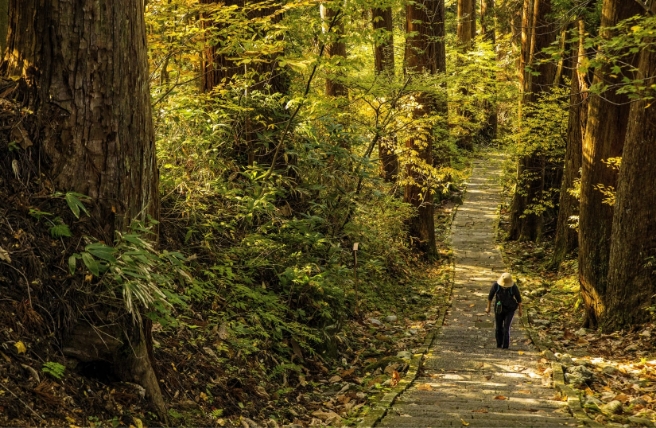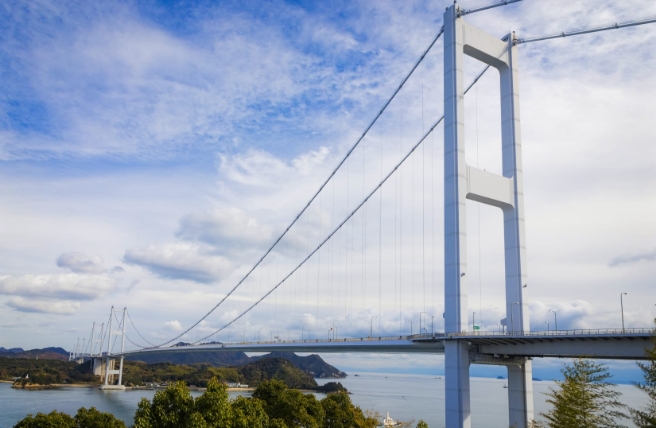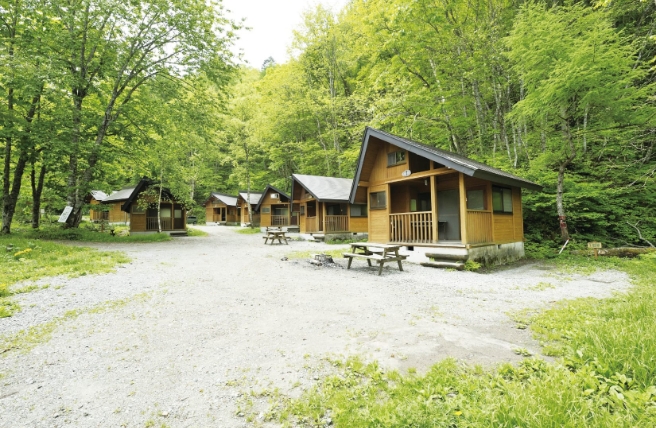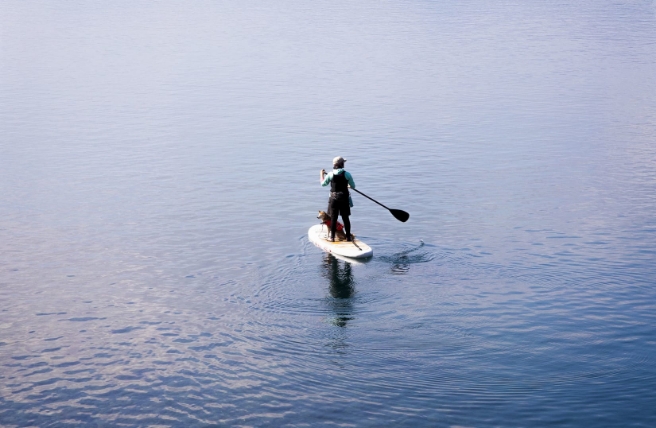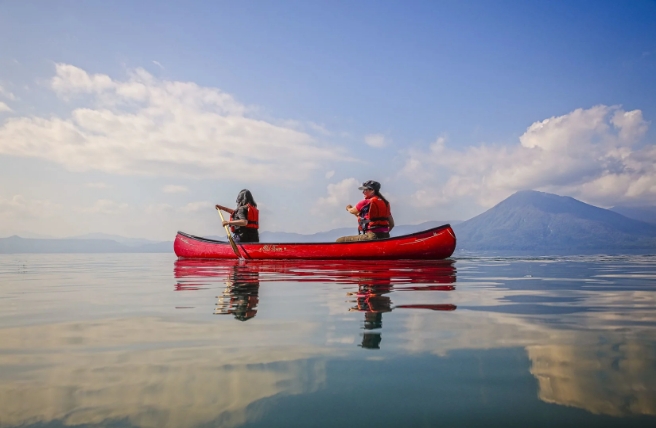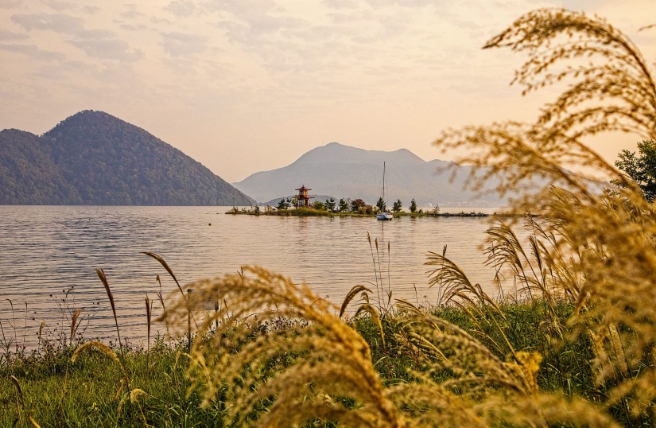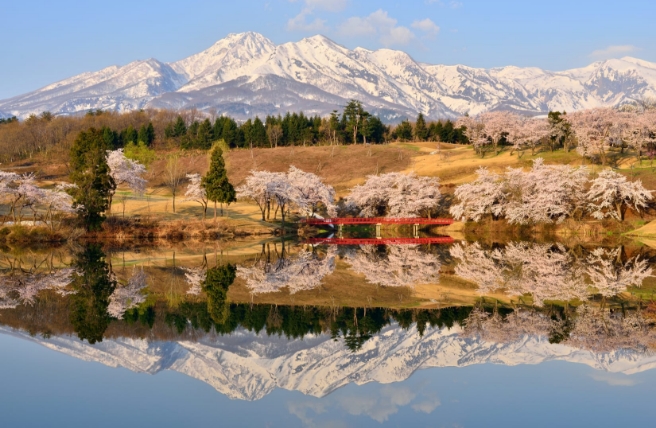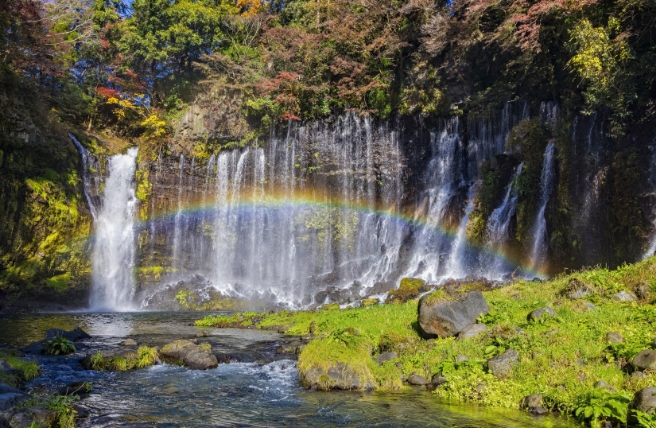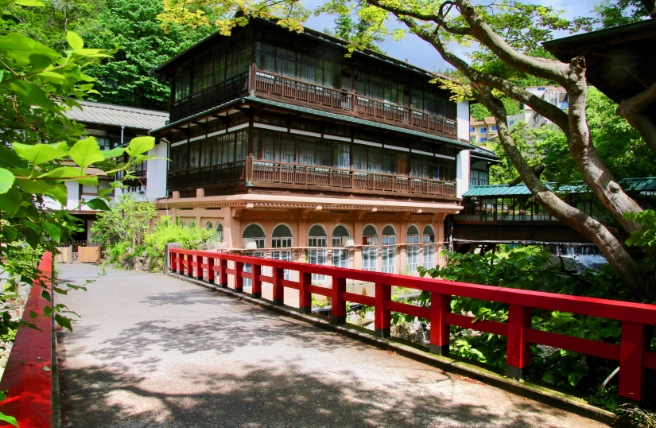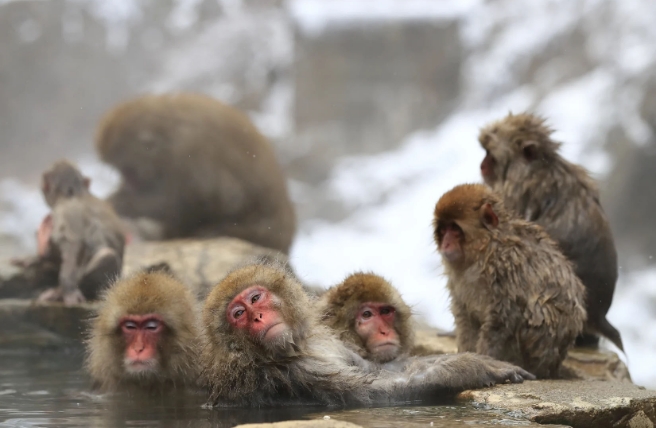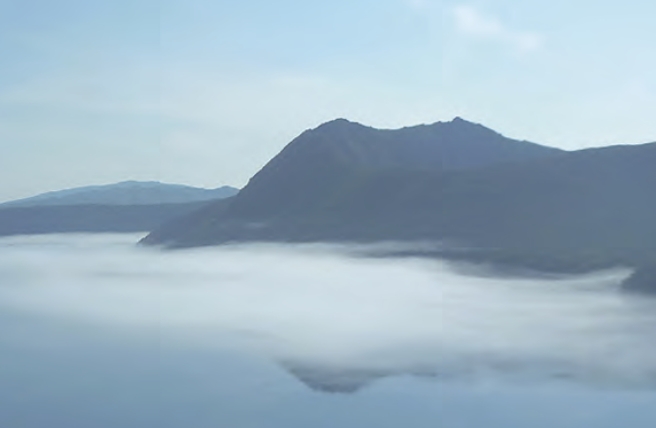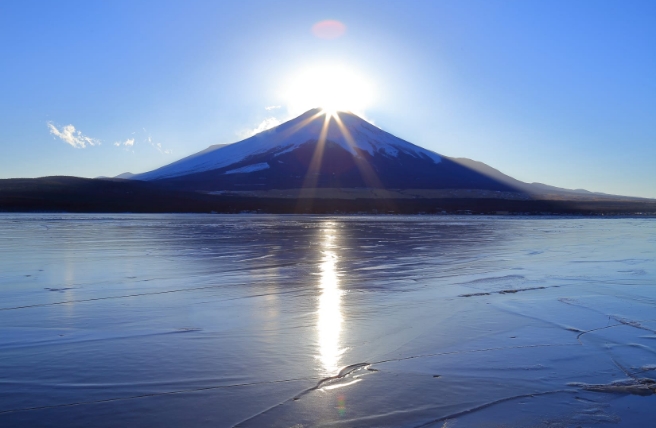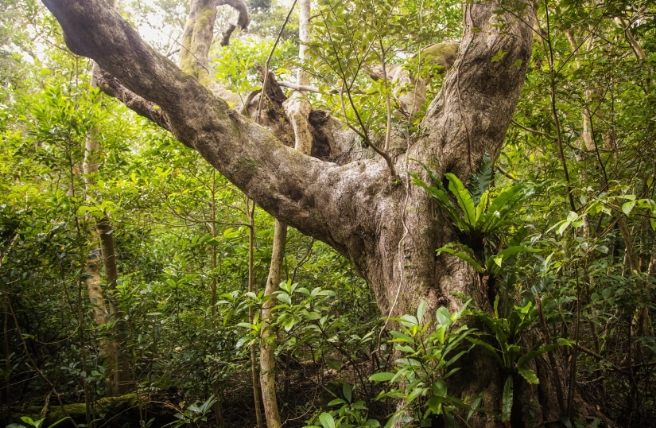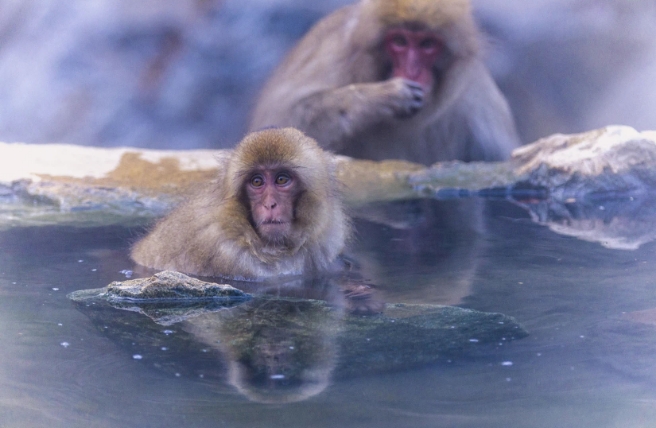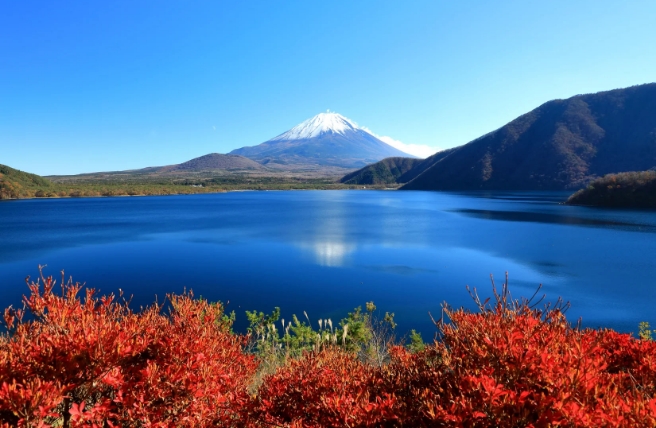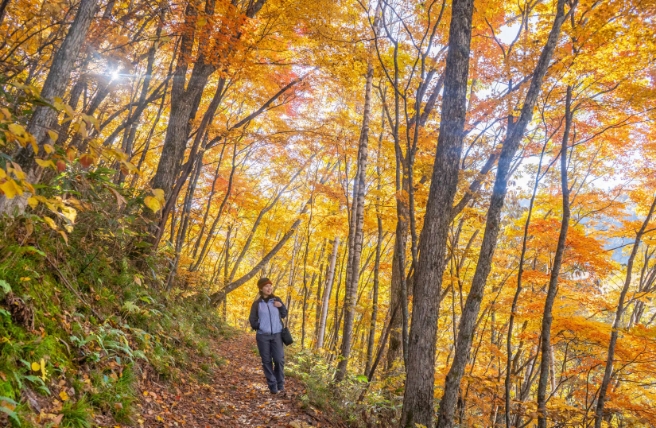Discover the mythology inspired by Yoshino Kumano National Park’s most important natural sites.
Yoshino Kumano National Park is said to be a “holy ground where gods dwell” and has been a pilgrimage site for more than 1,000 years. Its network of pilgrimage trails, the Kumano Kodo, is still popular today for both religious pilgrims and hikers.
The fascinating landscape of this area has captured people’s imaginations for centuries. It is known as the birthplace of the ancient faith Shugendo, which fused Buddhism and Taoism with mountain worship and animism. The interweaving of exceptional natural beauty and religious importance for multiple faiths has resulted in a region rich in mythology.
Before modern science could explain the region’s natural phenomena and geological formations, people told stories to explain the magical formation of these sites, as well as their curative effects. These compelling legends fuse elements of history with spirituality, and learning about them can enrich your visit.

Hashiguiiwa Rocks
The Hashiguiiwa Rocks are a series of about 40 pillar-like rocks that stretch 850 meters into the ocean, appearing like a bridge or pier. The science behind this phenomenon is as extraordinary as the legend born from it. Fourteen million years ago, magma from an enormous underground chamber seeped into fractures in the surrounding mudstone layers, where it eventually solidified. Over time, earthquakes elevated the landmass and the weak mudstone was eroded by the sea, leaving the harder igneous rock exposed as a solid wall. The elements gradually eroded the rock into the unusual shapes you can see today.
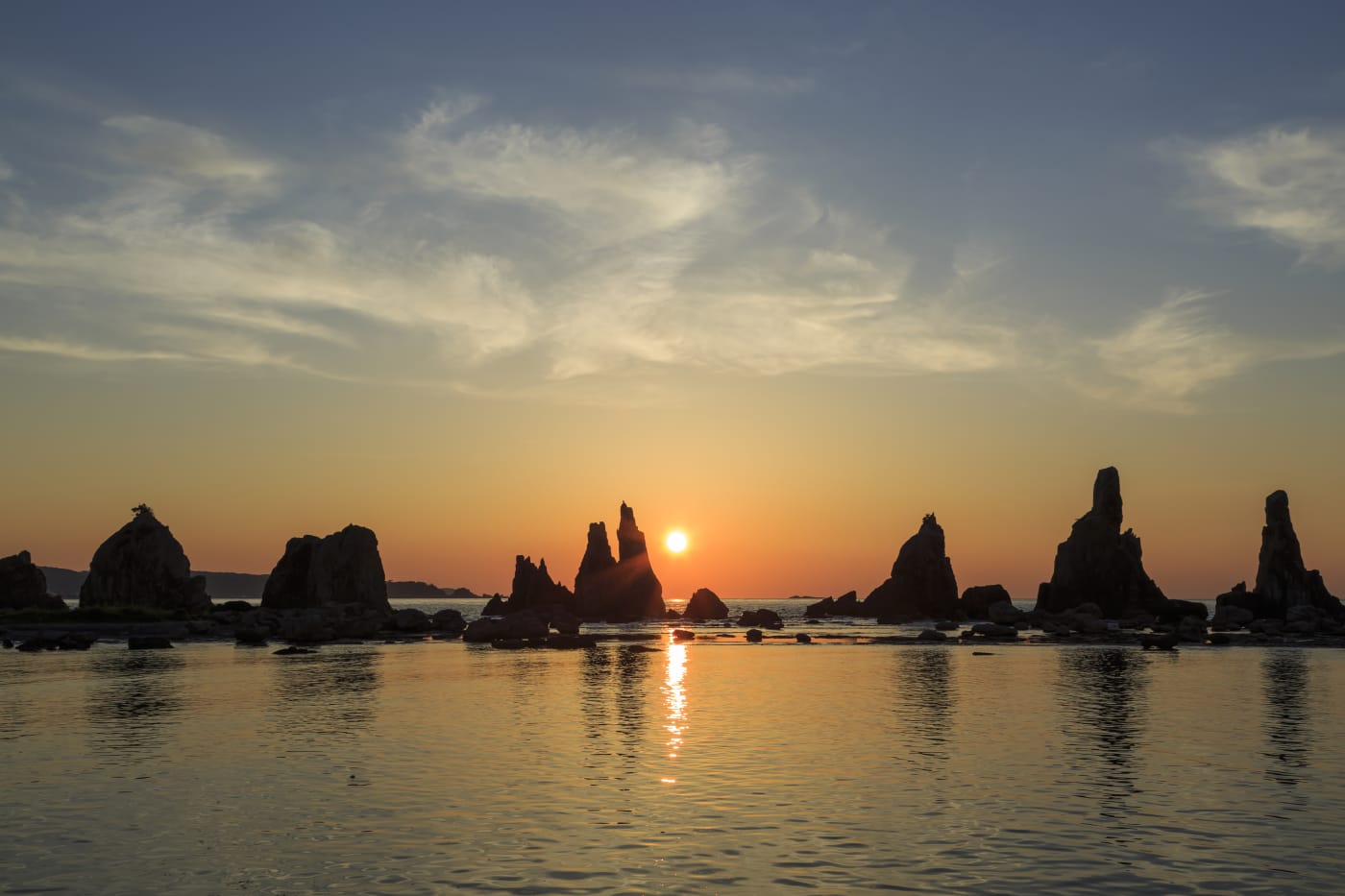
Before science could explain its formation, this curious sight must have intrigued locals. From generation to generation, they have passed on the legend that it was built by Kobo Daishi, also known as Kukai (774–835). He was a famed Buddhist monk credited with founding numerous temples, popularizing Buddhism in Japan, and creating the phonetic kana writing system that is still in use today. The story goes that local inhabitants asked him for help in building a bridge across the water to nearby Kii Oshima Island. The locals had been trying by themselves, only to have every effort destroyed by a demon. Kobo Daishi negotiated with the demon, who agreed to leave the bridge unharmed if Kobo Daishi could build it by himself within 24 hours. The demon even gave him superhuman strength to help him get the job done, yet still hoped he would fail. Kobo Daishi made fast progress and, worried that Kobo Daishi would actually achieve his task, the demon sabotaged his efforts by making a cock crow for morning far too early. Believing he had failed, Kobo Daishi stopped working, and the demon won. According to the legend, the remains of the partially-built bridge are the Hashigui-iwa Rocks.
Visit at low tide to walk among the rocks and get a better idea of their immense scale, and an appreciation for the venerable legend of Kobo Daishi.
Nachi Falls
Japan’s longest single drop waterfall is a spectacular sight and part of the Sacred Sites and Pilgrimage Routes in the Kii Mountain Range, a UNESCO World Heritage Site.
More than one ton of water per second tumbles over the rock face and plunges 133 meters into the basin below. The waterfall has been of considerable religious significance since it was discovered in the fourth century. Legend has it that the first emperor of Japan, Emperor Jinmu (711–585 BCE), found it when his boat landed on the Kii Peninsula and he saw something shining in the mountains. Emperor Jinmu had been following a yatagarasu, a mythical three-legged crow sent by the gods as a guide. The three-legged crow has since become an emblem of Kumano shrines across Japan, representing rebirth and rejuvenation. Its three legs represent heaven, earth, and mankind.

When Emperor Jimmu arrived at Nachi Falls, he enshrined the waterfall as a deity. Today you will see zigzag paper streamers called shide hanging across the falls, which mark the presence of a Shinto deity. A ceremony offering flowers to the waterfall is conducted on the first day of every month.
Kumano Nachi Taisha Grand Shrine, one of the Kumano Kodo pilgrimage’s most important shrines, overlooks the waterfall. You can reach it via a steep 30-minute hike up a set of stairs. The shrine was originally built in 317 to worship Nachi Falls. Relics of sutras, sacred Buddhist texts, from as far back as the 12th century have been discovered near the falls. Hiro-jinja Shrine, located right next to Nachi Falls, is associated with Kumano Nachi Taisha. This small shrine has a pump from which you can drink water from the falls’ plunge basin. Drinking this water is said to increase longevity.
Yunomine Onsen
This tiny village is home to one of Japan’s oldest known hot springs, with a 1,800-year history. It is located at the trailhead of two sections of the Kumano Kodo pilgrimage, making it a popular stop for hikers and a good place to revive weary muscles. It is also home to the legend of Oguri Hangan, one of the best-known legends surrounding Yoshino Kumano National Park.
Oguri was a young man who married a woman named Terute. Her disapproving family murdered him and sent her to a life of enslavement. The gods of the afterlife took pity on Oguri and sent him back to the land of the living, but left him unable to see, hear, or talk. A monk found Oguri and placed him in a cart. He hung a sign around his neck, which said that anyone who helped guide him to the healing waters of Yunomine Onsen would be blessed. People along the route pitched in to pull the cart, including his wife Terute, who didn’t recognize him in his frail state. He arrived at the hot spring after 444 days, and after 49 days of bathing in Yunomine Onsen, the water restored Oguri’s senses. In return, he saved his wife from enslavement and they lived happily ever after. The story is often retold in kabuki, a traditional form of Japanese theater.
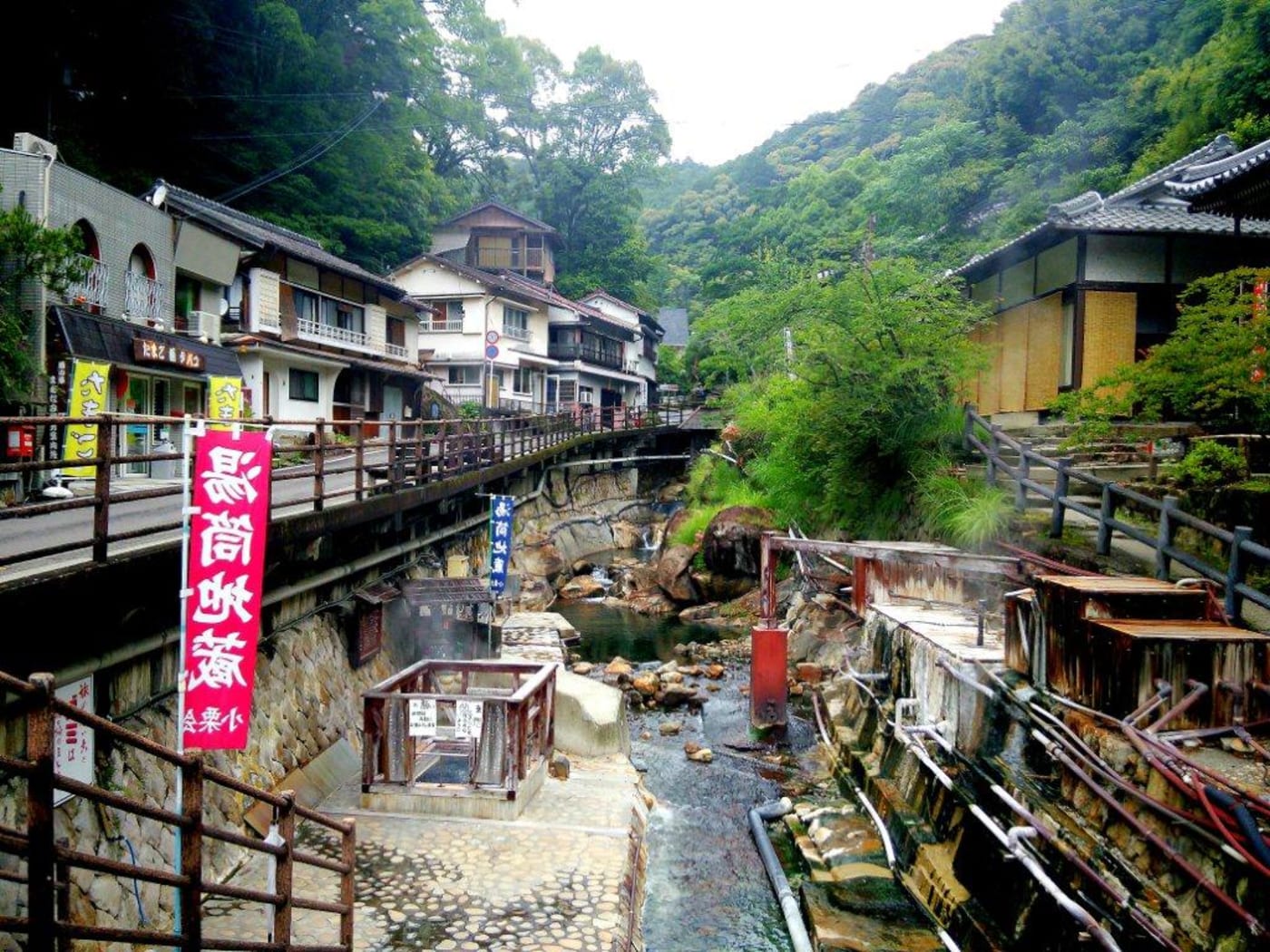
Bentenjima Island
Bentenjima Island is another spot in Yoshino Kumano National Park with an intriguing legend. This craggy, uninhabited islet just off the coast of the Ojaura Coast has a small shrine, marked by a red torii gate. Hakujabenten, a white snake goddess who is the deity of all that flows—including water, music, and art—is enshrined here.
The island is only accessible for a few days in March and August when a three-hour window makes it possible to walk to the island before the tide comes in. If you have the opportunity to visit the island, you may notice eggs left as offerings in the shrine. A local folk tale describes how snakes disguised as humans arrived on the island and lured away a fisherman’s two daughters. He was heartbroken, but in return, the mythical snakes ensured that his fortunes would prosper. Worshippers still leave eggs at the shrine to appease the snakes.
Written by Gaby Doman
